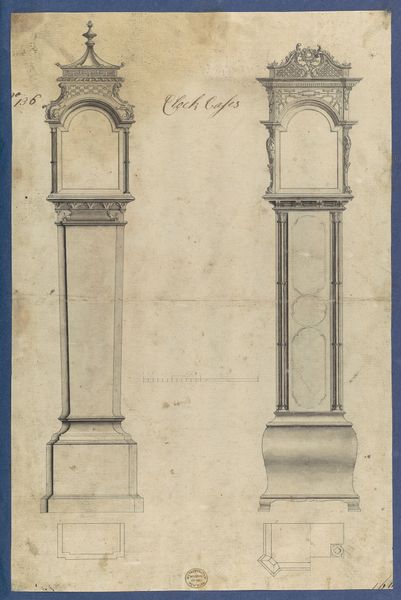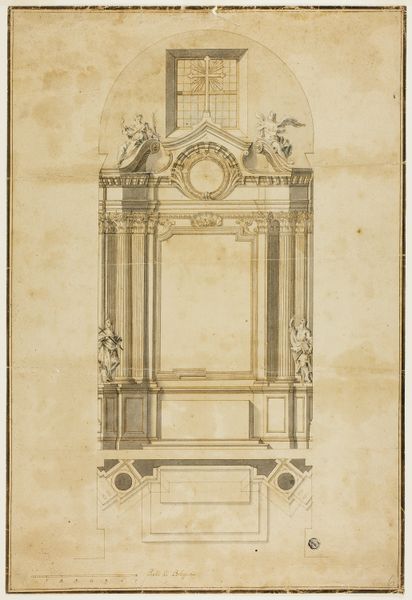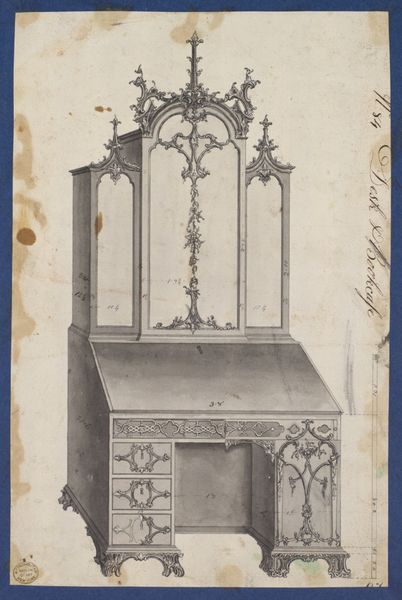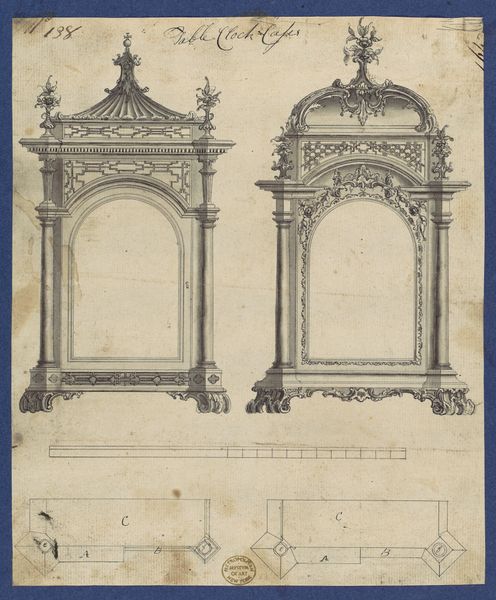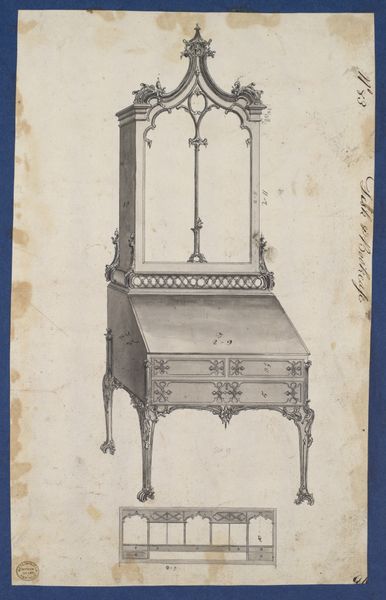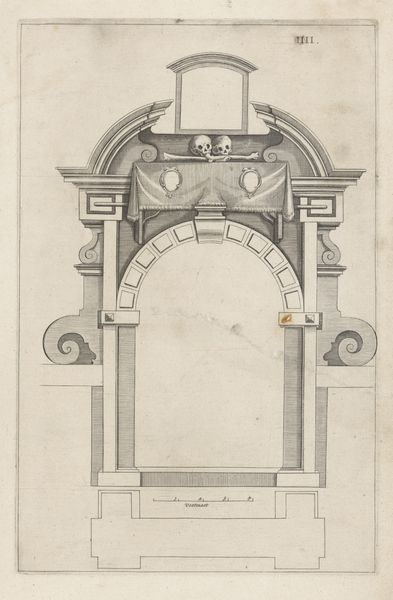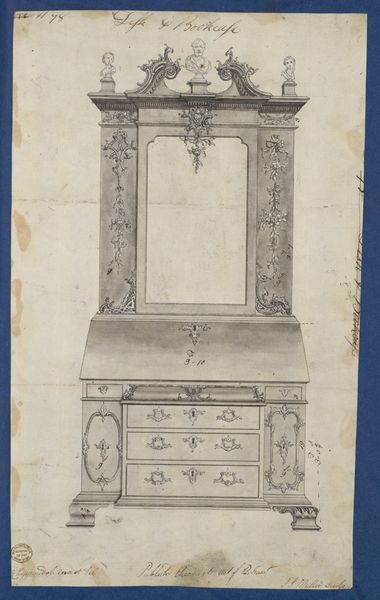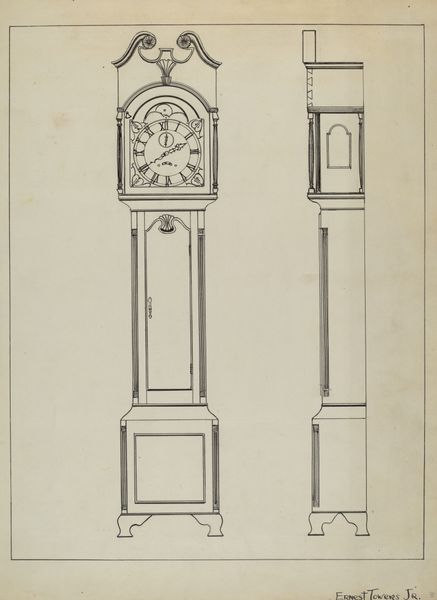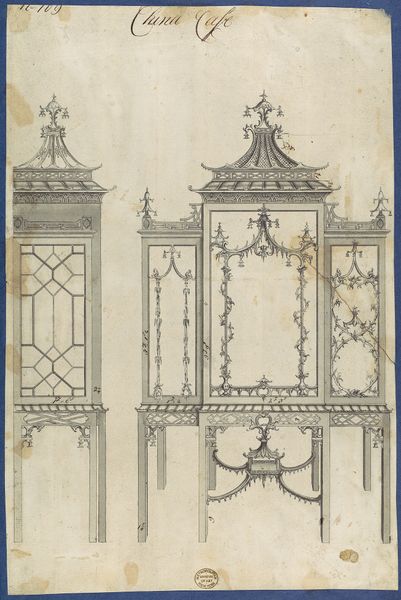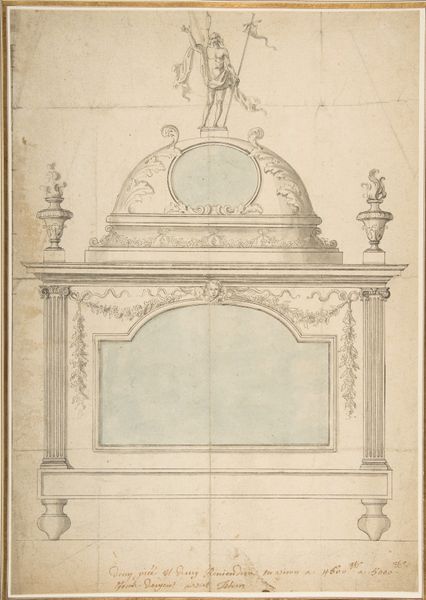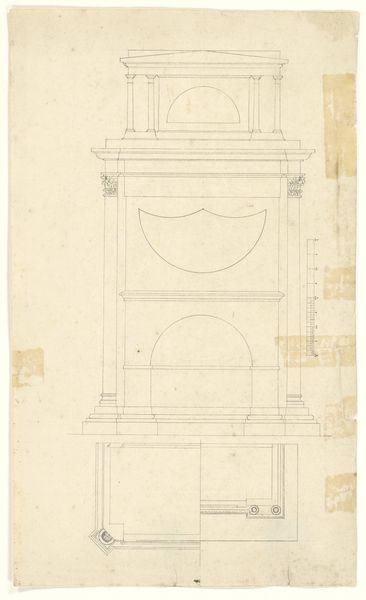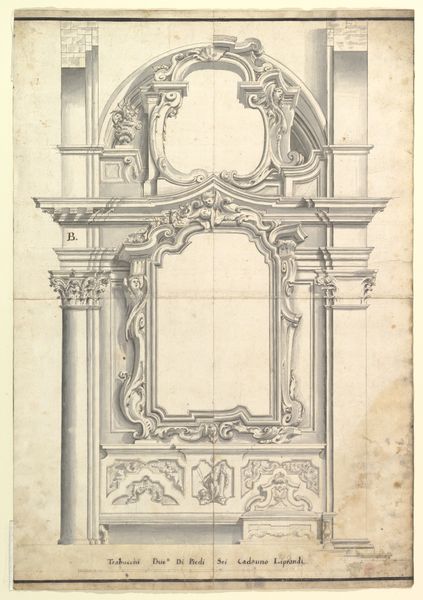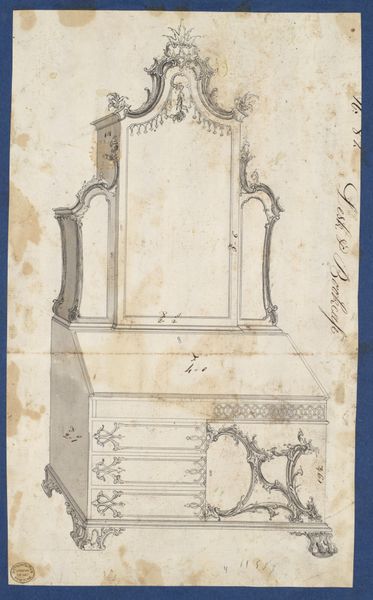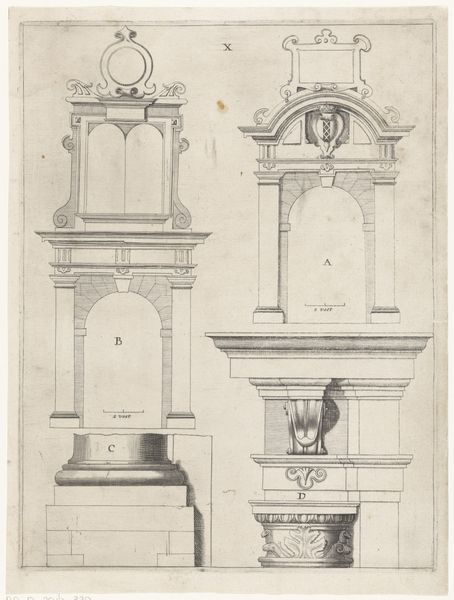
Clock Cases, in Chippendale Drawings, Vol. I 1754
0:00
0:00
drawing, print, woodcut, engraving
#
drawing
#
baroque
# print
#
woodcut
#
decorative-art
#
engraving
Dimensions: sheet: 13 15/16 x 8 3/16 in. (35.4 x 20.8 cm)
Copyright: Public Domain
Curator: At the Metropolitan Museum of Art, we have "Clock Cases, in Chippendale Drawings, Vol. I" created in 1754 by Thomas Chippendale. It’s a woodcut and engraving print displaying two elaborate clock designs. Editor: They are both strikingly detailed; however, the stark monochrome gives the cases a ghostly, haunting presence rather than a functional feel. They appear frozen in time themselves. Curator: Yes, the imagery of time embodied in a clock has its place as a symbol in numerous cultures. Notice the distinct ornamentation? The case on the left presents simpler, geometric adornments whereas the right uses foliage motifs. They reflect an era preoccupied with status and embellishment. Editor: These clock cases, I feel, tell us something important about social divisions during the period. Clocks regulated work and domestic life and possessing such an ornate one wasn’t just about telling the time, it signaled privilege, a certain ability to control or perhaps ignore the relentless tick-tock for some. Curator: Absolutely. The style of the engravings harks back to the Baroque aesthetic, a grand celebration of authority and wealth expressed through visual complexity. Even a simple object of daily use could be transformed into a powerful status symbol. Editor: It also underscores the ways domestic space becomes a site for performing gender roles. Consider who commissioned, designed, owned, or even maintained these clocks. Each reveals hierarchies and power dynamics intrinsic to that era. Curator: What is most interesting to me is that even though it's intended to be a utilitarian item, it also shows us a need to fill our everyday items with the things we value: power, luxury, taste. The clocks stand as reminders of fleeting time and also embodiments of values we imprint on time’s passage. Editor: It makes one wonder what future artifacts might reveal about our current values surrounding time, efficiency, or excess in an era so shaped by digital devices. A fascinating visual dialogue between past and future unfolds. Curator: I will now consider time in a totally new way. Thank you for your observations! Editor: Thank you! That was great.
Comments
No comments
Be the first to comment and join the conversation on the ultimate creative platform.
